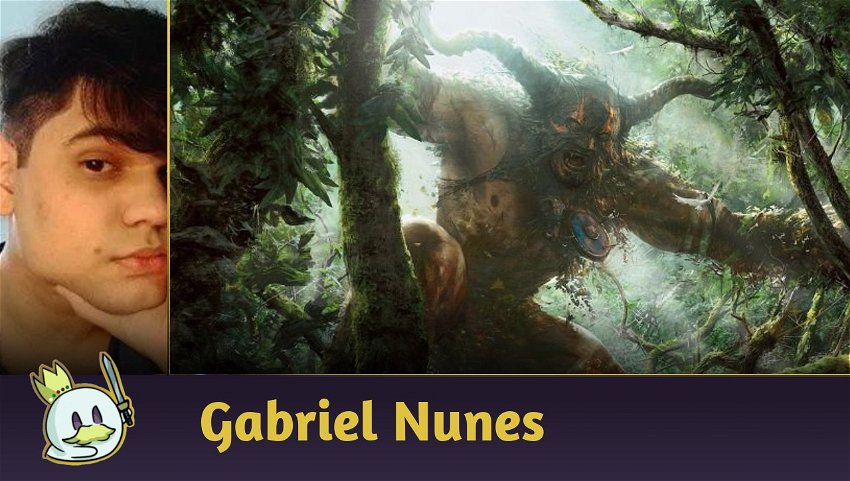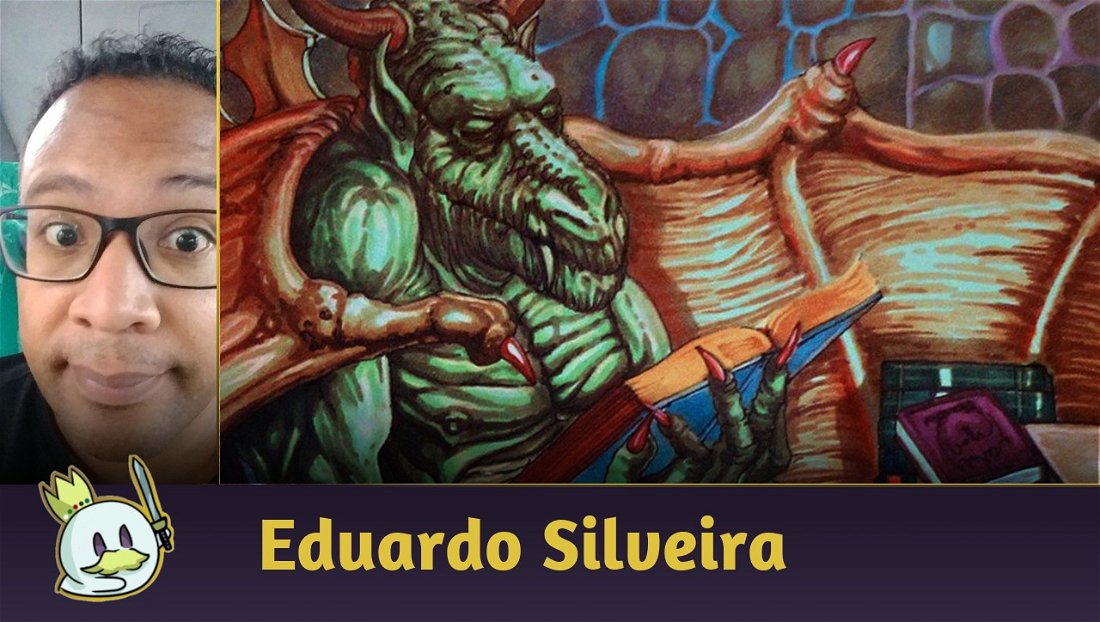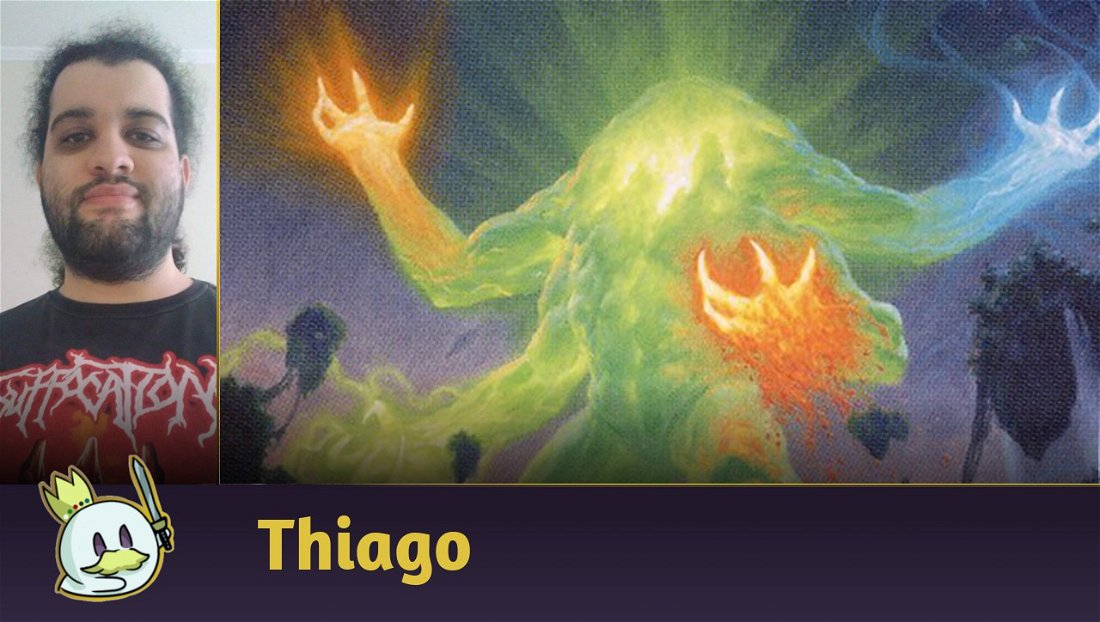Among all the variety of decks and possible archetypes, some decks end up being highlighted for their consistency against the Metagame, these decks that, even with constant changes, achieve satisfactory results. An example of this kind of deck is Burn, where regardless of the Metagame, it's never bad; it usually won't be the strongest deck in the championship, but with a good pilot, it will always be a reliable option.
But we're not talking about burn today, but about Amulet Titan! Since it entered the format, the deck has shown itself to be a solid and consistent option, thanks to its explosive game plan and which can often ignore the opponent's plan, in addition to its consistency that can make you win even on longer matchups.
Ad
The deck may have back and forth in relevance, but it never really left the Metagame. A clear example was the two top 8 positions in the MTG Vegas. In addition, the deck constantly appears in Challenges and Leagues in Magic Online, and we'll even use as an analysis Nade's list, who got second place on the December 4 Challenge
The Decklist
Functionalities

To talk about the deck's features, it's crucial to talk about the two cards that give the deck its name: Primeval Titan and Amulet of Vigor, which are distinct cards, but crucial for the deck's strategy.
Amulet of Vigor is the deck's main ramp piece, and thanks to its interaction with bouncelands, it's possible to generate a high amount of mana in the first few turns of the game, thus allowing for stronger plays, which are frequently more powerful than the opponent can do at that point in the game. Another important point is that amulets stack in effect, so lands generate more mana when you have two or more copies of the artifact on the battlefield.
The Primeval Titan is the main wincondition and the reason why the deck is built to generate a lot of mana early on. A Titan entering the battlefield in the early game would be problematic enough for being a 6/6 creature with trample, but let's face it, its ability to search for any lands and place them directly on the battlefield is what makes our giant so powerful in this deck, thanks to the expressive amount of utility lands the deck runs, ranging from lifegain to a combo that will make the Primeval Titan hit for almost lethal! It is a powerful card that practically wins the game on its own.

As a ramp deck, we will have methods of having more lands played per turn, in this case, we have very efficient creatures for that, and that generally have other functions in the deck.
Arboreal Grazer is a simple addition, but very effective, as its effect that resolves as the popularly called "Sloth" enters the battlefield brings advantage over other possible one-drops, such as Sakura-Tribe Scout.
In addition, the Grazer has a great defensive body, which together with its reach ability, can hold the game against more aggressive decks.
Dryad of the Ilysian Grove is a card that has impacted the deck since its release. Its effect of putting more lands per turn, as powerful as it is, isn't unique, and cards like Azusa, Lost but Seeking do it even more efficiently. But what complements the dryad's usability in this context is its second ability, which turns your land into every basic land type. It may sound simple, but it's the key card in the deck, at first, making lands generate mana of any color is interesting enough for a deck with a high green devotion and several utility lands that don't add green. But there is another card that benefits from this: Valakut, the Molten Pinnacle, which along with our dryad, will make each land drop deal 3 damage to any target
Ad
We also have the aforementioned Azusa, Lost but Seeking that has been in the deck practically since its creation. It may not have other functions like the previously mentioned cards, but the quality of its ramp ends up being superior, placing three lands per turn is extremely powerful and, together with the bouncelands and the amulet, it can generate an absurd amount of mana in the first turns.

Nade also brought an interesting Crimson Vow addition, Cultivator Colossus, which comes out as a "fifth copy" of Primeval Titan, but with a slightly different approach, it doesn't It searches for specific lands, but it comes with it a function to bring more card advantage to the deck, since given the amount of land we use and the bouncelands function to always leave a land in our hand, our giant plant can draw several cards and, in addition, it's an exponential creature that will often put pressure on the opponent, and also gets bigger than the Titan, which is great for dealing more damage and escaping removals like Unholy Heat.
Consistency

Another important point is consistency in finding our creatures, especially our winconditions. For this, the deck has two of the best creature tutors in the format.
Eladamri's Call is simple and powerful, and for two mana searches for any creature in the deck, so it's basically "two more Titan copies"; but with a higher virtual cost. Being an instant gives you strategic advantage, so you can choose the best time to get the best card.
Summoner's Pact is the most essential tutor of the deck, considering that it has a peculiar cost, being zero when casting the card, which is perfect for mana optimization, searching our winconditions practically for free. Yes, it is necessary to pay four mana on the next turn, but many times this turn may not come, as the Primeval Titan has a great potential to end the game practically when it comes into play.
Another critical point is its interaction with Tolaria West, which, thanks to its ability to transmute, manages to bring even more consistency to the plan of searching for specific creatures.

There are some essential lands in the list that deserve to be mentioned in more detail.
And obviously Urza's Saga would be welcome in this deck, and thanks to the back-to-hand recursion that cards like Selesnya Sanctuary and Simic Growth Chamber bring, it's possible to extract plenty of value with its ability to create tokens, but its main function is to bring Amulet of Vigor to the battlefield, which provides consistency to have more copies of it and thus generate even more mana, not to mention the tutor of the saga can't be countered, which brings inevitability to our plan.
Speaking of bringing inevitability and preventing counterspells, we have Cavern of Souls, which are here precisely to ensure that our giants enter the battlefield, which is perfect for when the titan enters too early, as thanks to his body and mana cost, not all the answers in the game can stop it, and messing up counterspells ends up being of great help.
Ad
And of course, we have to talk about the most offensive power interaction in the deck, Slayers' Stronghold and Sunhome, Fortress of the Legion are the lands Primeval Titan searches for to finish the game, along with Boros Garrison and amulets, it is possible to create a sequence in which the giant enters, searches for Stonghold to gain Haste, attacks and searches for Sunhome to gain double strike, dealing 12 damage in a single hit.
Strengths & Weaknesses
Cutting to the chase, the Amulet Titan is an extremely complex deck. As much as the deck has the potential to generate a lot of mana with the amulets, this mana will not stay in the game forever, considering that it is necessary to take advantage of triggers to optimize this mana when the land enters the batlefield, therefore, understanding the correct sequences is essential to be successful in your plays. Think of these triggers as Storm "rituals", they are a mana advantage that will deplete with a step change, so making the most of that mana is crucial.
In addition, the deck is full of interactions that bring more nebulous plays, such as using bouncelands to reuse land effects, especially lands like Tolaria West; the reality is that the titan brings a variety of lines and sequencing per turn, and while variety and power of choice are extremely positive points, they can cause a player to make the wrong choice.
However, it is true that when mastered, the deck has all the advantages and strong plays mentioned, thus being a great competitor in the current metagame, since its explosive game plan can ignore more paced decks.
Alternate Card Choices
As a deck that's been in the format for a long time, it's clear that many people have tested and are still testing options and variants for the deck, and this is where we'll discuss them a bit.

Karn is an excellent card here, he was even present in the two lists that made the top 8 at MTG Vegas, for being a great plan B (and often ended up being plan A). Its cost makes the planeswalker to be easily sequenced, and searches for a piece from the sideboard to be cast on the next turn, or even the same, in case of accessing more mana. Also, its static ability turns out to be extremely useful in many contexts against well-placed decks in the metagame.

We also have a very peculiar utility land, being originally a spell, Turntimber Symbiosis can serve to give more consistency in finding the Titan, even if you don't search the entire deck, seven top cards are more than 10% of the deck and even if we don't find Primeval Titan, it can grow smaller creatures in the deck, making them more resistant and offensive threats. All this combined with the fact that the card is a land that can be reused in a lategame, thanks to the bouncelands.
Conclusion
Even being a complex deck with peculiar sequences, the Amulet Titan makes its place in the format, being extremely rewarding to those who master it, thanks to its extreme consistency and resilience.
Ad
Until next time!









— コメント0
最初にコメントする